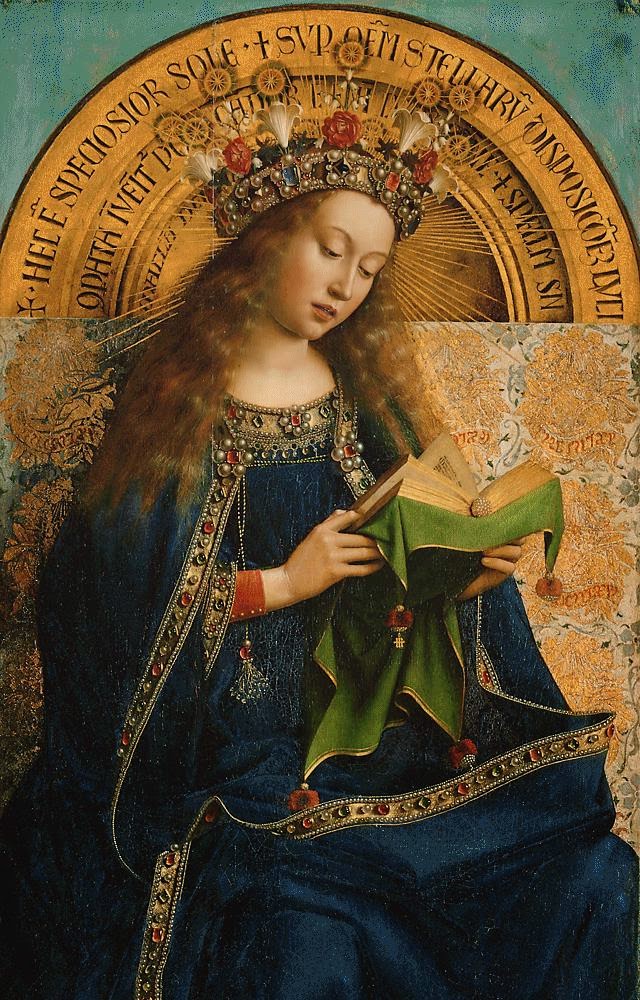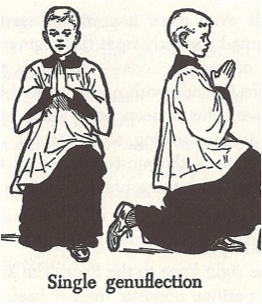What
do we owe our Blessed Mother? Any answer
to this question is the fathometer that measures our depth of Marian
spirituality. The traditional Mariology
is divided into three aspects. I) Our
Lady in relation to God (ad Deum),
where we devote our study of almost all Marian privileges. It starts with Divine maternity and continues
looking at her some of the extraordinary privilege with which she is vested
with her Creator. II) Our Lady in
relation to us – here we look at the prerogative of Our Lady under the title of
Co-Redemptrix, Mediatrix of all graces, etc.., and III) finally our cult
towards her (ad eam), and this is
designated as ‘Hyperdulia’
It
is obvious, if we browse through various theological manuals and distinguished
mariologist, to find the stress is laid on the 1st two aspects. It is not inaccurate to do so. It is the duty of the sacred science to
establish the truths of the catholic faith.
But, unfortunately, they do not spend enough focus on the last aspect. I
say it is unfortunate, because it is also a very important part of the
doctrine that is intimately associated with our salvation. This part of the sacred science answers
exactly what do we owe Blessed Mother.
Here
we will briefly synthesize the doctrine of De
cultuMariae, with the guidance of the Angelic Doctor. Since it is the key to possess true piety with doctrine.
Before answering the question, let
us briefly draw a very brief sketch of St. Thomas treatise on potential parts
of Justice in his Summa Theologica[1].
There are several distinct virtues all of which participate in certain manner
in the very definition of Justice. I say ‘certain manner’ because they lack
something of the full perfection of the definition. It is why they are called
Potential Parts.: Now, Justice is defined as a virtue that disposes man to
render each one his due (2a 2ae q.58.a.1) Any virtue that operates along the
same path, but cannot give to other all that is due or when the very nature of
that debt does not allow an exact rendering is classified as its potential
part. (2a 2ae. q80) The Doctor Communis gives a list of them and analyzes them
individually- Religion, Piety, Observance, Gratitude, Veracity, Affability
& Liberality. These are the subject matter of his 2a, 2ae question 80 to
120. Among all other potential parts, Religion, Piety, Observance have are
thing in common, that is they deal with debts which man owes but cannot
possibly return in full.
i.
Religion
– deals with man’s obligation towards God.
ii.
Piety - With man’s relation with those from whom
he has derived his life.
iii.
Observance
– towards his superior or to those who excel in some kind of dignity. (q. 102
art 2. sed contra.)
It
is also obvious that the obligations of religion are given only to God Himself.
For He alone Supreme Being bound as to our unfailing principle resolutely
directed as at to our last end. It is wrong to give the same cult to any
creature even if it is the most excellent of all the immaculate Mother of God. For it is reserved to the creator alone, as
St. Augustine says (de verarelig. 55)
may religion bind us to the one Almighty
God[2]
However
there is a certain cult we owe to certain men because of the position they
occupy or the excellence with which they are endowed. This is what St. Thomas calls
the virtue of observance. Under this every human being has an objective
obligation to render due honor to Blessed Virgin Mary.
Now
the virtue of observance is divided into two parts – dulia & obedience. The
latter deals with those who have to right to command us – superiors in both
civil and ecclesiastical sphere.
The
other part of observance interests us, because while dealing with the question
of dulia, St. Thomas States, “Hyperdulia is the highest species of dulia taken
in the wide sense[3]”.
Dulia is simply Latinized form of a Greek word[4].
In Christian terminology it is defined
as a virtue that disposes men to render honor or service to creatures because
of the perfection of their position of all creature that should deserve this
honor the citizens of heavenly kingdom stands first in the list. By their
perfection they deserve veneration and certain cult and this honor is what we
call ‘dulia’. But the dignity of the perfection of the Mother of God surpasses
every creature and thus deserving a special honor[5]-
something above dulia –‘hyperdulia’.
This is what asserted in the Code of the canon law (CIC 1255 §1). And it is DoctrinaCatholica[6]
 |
| Our Lady |
In
order to understand this very special prerogative, spiritual authors draw a
beautiful analogy that exists between the supreme cult of latria and the hyperdulia,
keeping always in mind that both are essentially
and completely distinctfrom each other and any confusion would result in
grave injustice.
“God has a dominion over all
creatures in a special & singular way, because he made all things and has
supreme dominion over all, consequently a special kind of service is due to him
– which is known as latria.”(q.82, ad 3um).In other words, it is an act of will
by which men are prompt to do whatever belongs to the service of God.
By analogy, we can say that hyperdulia is an act
of willingness to do whatever is needed to pay the debt of acknowledgement owed
to Blessed Virgin Mary by reason of her gloriousposition above all saint on the
account of three reasons[7]:
(a) by reason of her excellent dignity – as mother of the Word Incarnate. (b)
by reason of her exceeding glory, (c) by
reason of her exalted glory – as queen of heaven and earth.Besides the notion
of acknowledgement there is a second element – Petition of Prayer – not as to
one who made all things (latria) but as to one whose intercession is so strong,
so powerful that ‘never was it known that
anyone who fled to her protection, implored her help, sought her intercession
was left unaided’. (St. Bernard)
It
is true that she is not the only intercessor we have before the throne of
almighty, but hers is the only intercession that is most powerful and most
universal in extent. (The extent of Ste. Thérèse of Lisieux orSt. John
Bosco arelimited to the Theresian or Salesian circles). This even is intensified
by the fact that she is the dispenser &mediatrix of all graces. Thus what
we owe to Blessed Virgin through hyper dulia is truly of the ‘highest species of dulia’.
In
conclusion, what do we owe her through Hyperdulia?
We
owe Blessed Virgin Mary
a)
Veneration
and reverence, by reason of her superiority and excellence and especially
by reason of her dignity as the Mother of God.
b)
Confidence
and invocation, because she is the most powerful and most merciful
mediatrix with God.
c)
These
two suppose a love for the most perfect Mother of God and filial
love, because the Mother of God is our spiritual Mother.
d)
And
they connaturally incite us to imitateher virtues and her holiness[8].
Let us therefore develop in us
agreater willingness to pay ‘the highest species of dulia’to our Blessed Mother,
the tribute that is due to her.
[1] All quotations of Summa
Theologicaare taken from the English translation of the Fathers of the English Dominican Province.
[4] Class notes from Fr.
Patrick Abbet, St. Thomas Aquinas Seminary, Winona
[6]Cf. AugustimaeVirginis (12 Sept, 1897), Ad diemIllum (2 Feb, 1904), Lux
veritatis (25 Dec, 1931) and Sacra RituumCongregatio, 1 June 1884 – quoted by Augustus Ferland, de Marialogia, Montréal, 1945. Pg. 438
[8]Merkelbach, O.PMariologia,page 206. (2007 edition, reprinted by www.medru.be).Augustus Ferland has the same thing
but in different order. 1. Honor – on
the account of the singular privilege of Divine Maternity, 2. Imitation – on
the account of her exceeding holiness, 3.Invocation - on the account of her
being the merciful mediatrix and co-redemptrix, and the Universal dispensatrix
of grace, 4.Tender love - because the Mother of God is our beloved spiritual
mother. (Augustus Ferland, ibid,
pg. 439)








